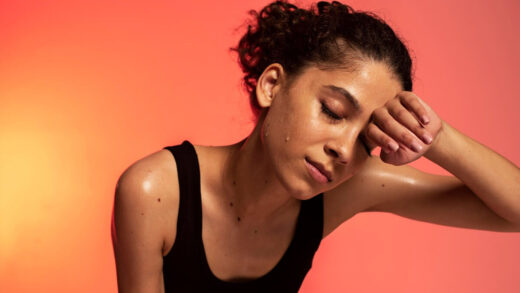As the days grow longer and the temperatures rise, many fitness enthusiasts take their workouts outdoors to enjoy the sun and fresh air. Running through the park, cycling by the seaside, or joining a bootcamp in the open air sounds ideal. But exercising during summer months comes with unique challenges especially when it comes to heat, hydration, and sun exposure.
Whether you’re an experienced athlete or just getting into a new fitness routine, knowing how to protect your body during summer workouts can make the difference between a healthy session and a dangerous one.

What Should You Pay Attention to When Exercising in Summer?
Exercising in hot weather puts additional strain on the body. As your core temperature rises, your body sweats to cool down. This is a natural and efficient process until dehydration, overheating, or sun exposure begins to interfere.
Here are the key considerations for summer workouts:
- Hydration: Fluid loss through sweat happens faster in hot weather.
- Heat regulation: The hotter and more humid the environment, the harder it is for the body to cool itself.
- Skin protection: UV exposure increases dramatically during outdoor workouts.
- Clothing: The wrong fabrics can trap sweat and raise your body temperature even more.
- Timing: Exercising in peak heat hours can increase the risk of heatstroke or sunburn.
Understanding how to adapt your workouts to the season is essential for staying safe, avoiding injury, and maintaining performance.
What Is the Best Time to Exercise in Summer?
Timing is everything when it comes to summer fitness. The ideal time for outdoor workouts is:
- Early Morning (5:30–8:30 AM)
- Late Evening (7:00–9:00 PM)
During these hours, the sun is lower, temperatures are milder, and UV radiation is significantly reduced. Early mornings also offer the benefit of cleaner air, especially in urban environments.
Avoid working out between 11 AM and 4 PM, when UV rays are strongest and the heat index peaks. If you must exercise during the day, opt for indoor spaces or shaded environments and keep the session shorter than usual.
What Are the Risks of Exercising in Extreme Heat?
Pushing yourself too hard in the summer sun can lead to serious consequences. Among the most common heat-related conditions:
1. Dehydration
Excessive sweating without replenishing fluids leads to dehydration, which can result in:
- Headaches
- Dizziness
- Muscle cramps
- Rapid heartbeat
Even mild dehydration can reduce physical performance and increase perceived exertion.
2. Heat Exhaustion
This condition happens when your body struggles to cool itself efficiently. Symptoms include:
- Heavy sweating
- Nausea
- Weakness
- Pale or clammy skin
Left untreated, heat exhaustion can escalate quickly to heatstroke.
3. Heatstroke (Sunstroke)
Heatstroke is a medical emergency. It occurs when the body’s temperature regulation fails, causing the core temperature to rise dangerously (above 40°C or 104°F). Symptoms include:
- Confusion or disorientation
- Fainting
- Seizures
- Lack of sweat despite overheating
This condition can cause organ failure if not treated immediately. That’s why timing and self-monitoring are non-negotiable when exercising outdoors in high heat.
How to Prevent Fluid Loss While Exercising
Sweating is the body’s way of regulating temperature, but it also means you’re losing water and electrolytes, both of which are essential for proper muscle and brain function.
To stay hydrated:
- Pre-hydrate: Drink 500 ml of water 1–2 hours before exercise.
- During your workout: Sip 150–250 ml of water every 15–20 minutes.
- Post-workout: Replace fluids with water and, if needed, a sports drink containing electrolytes (sodium, potassium, magnesium).
If you’re exercising for more than 60 minutes or sweating heavily, consider drinks that also contain carbohydrates and electrolytes to support endurance.
Avoid energy drinks, caffeine, or alcohol before your workout, as they increase fluid loss and raise your risk of dehydration.
Choosing the Right Clothing for Summer Workouts
Your clothing can either help your body stay cool or work against it. During the summer, lightweight, breathable fabrics are your best ally.
Key Tips for Summer Workout Attire:
- Wear moisture-wicking fabrics: These pull sweat away from the skin, helping you stay dry and cool.
- Choose light colors: White, pastel, or grey reflect heat rather than absorbing it like black or navy.
- Avoid cotton: While comfortable, cotton holds onto moisture, which can weigh you down and cause chafing.
- Consider UV-protective gear: Some athletic wear comes with built-in SPF protection, ideal for extended sun exposure.
- Use accessories: A breathable hat or UV-protection sunglasses can provide extra shielding for your face and eyes.
For women, sports bras should be made of breathable mesh and offer proper ventilation, especially for high-intensity outdoor sessions.
Is Sun Protection Necessary During Outdoor Workouts?
Absolutely. Sun protection is non-negotiable, even if you’re working out during early morning hours or in partly cloudy conditions. UV radiation penetrates clouds and can still damage your skin.
Best Practices for Sun Protection While Exercising Outdoors:
- Apply sunscreen: Use a broad-spectrum sunscreen with SPF 30 or higher at least 15–20 minutes before heading out. Reapply every 2 hours, or more often if sweating heavily.
- Use sports-specific sunscreens: These are sweat-resistant and designed not to run into your eyes.
- Don’t forget “forgotten zones”: Ears, back of the neck, and the tops of your feet are often exposed and easy to overlook.
- Use lip balm with SPF: Your lips are skin too and are prone to sunburn.
- Find or create shade: Whenever possible, choose tree-covered routes or bring along a UV umbrella if walking or cooling down.
Even a mild sunburn can affect thermoregulation and make your body work harder to stay cool, increasing your risk of heat-related illness.
Tips for a Safe and Effective Summer Workout Routine
- Start slow and acclimate: If you’re not used to training in the heat, begin with shorter, lighter sessions.
- Listen to your body: Any signs of dizziness, nausea, or chills should be taken seriously.
- Cool down actively: Avoid sudden stops. Walk or stretch in a shaded area after intense exercise.
- Track hydration status: Monitoring your urine color (light yellow = good hydration) is a simple and effective way to stay aware.
- Fuel wisely: Eat light meals rich in complex carbs and natural electrolytes, such as bananas, cucumbers, and watermelon.
When to See a Medical Professional
If you experience any of the following during or after exercise, seek immediate medical help:
- Persistent dizziness or confusion
- Inability to sweat
- Shortness of breath
- Chest pain
- Skin that feels hot but dry
These could be signs of heatstroke or severe dehydration, both of which require urgent care.
Prioritize Your Health

When it comes to protecting your body during hot weather, knowledge is your first line of defense but expert support is just as essential. Whether you’re an amateur athlete or a seasoned runner, Erdem Hospital in Istanbul provides specialized services for managing sports-related health concerns. From hydration therapy and heat exhaustion evaluation to customized fitness planning and dermatological care for sun-related skin damage, Erdem Hospital’s multidisciplinary team ensures that your fitness goals align with safe, sustainable health practices. With 37 years of experience and a commitment to personalized care, Erdem Hospital supports your journey toward well-being, no matter the season.